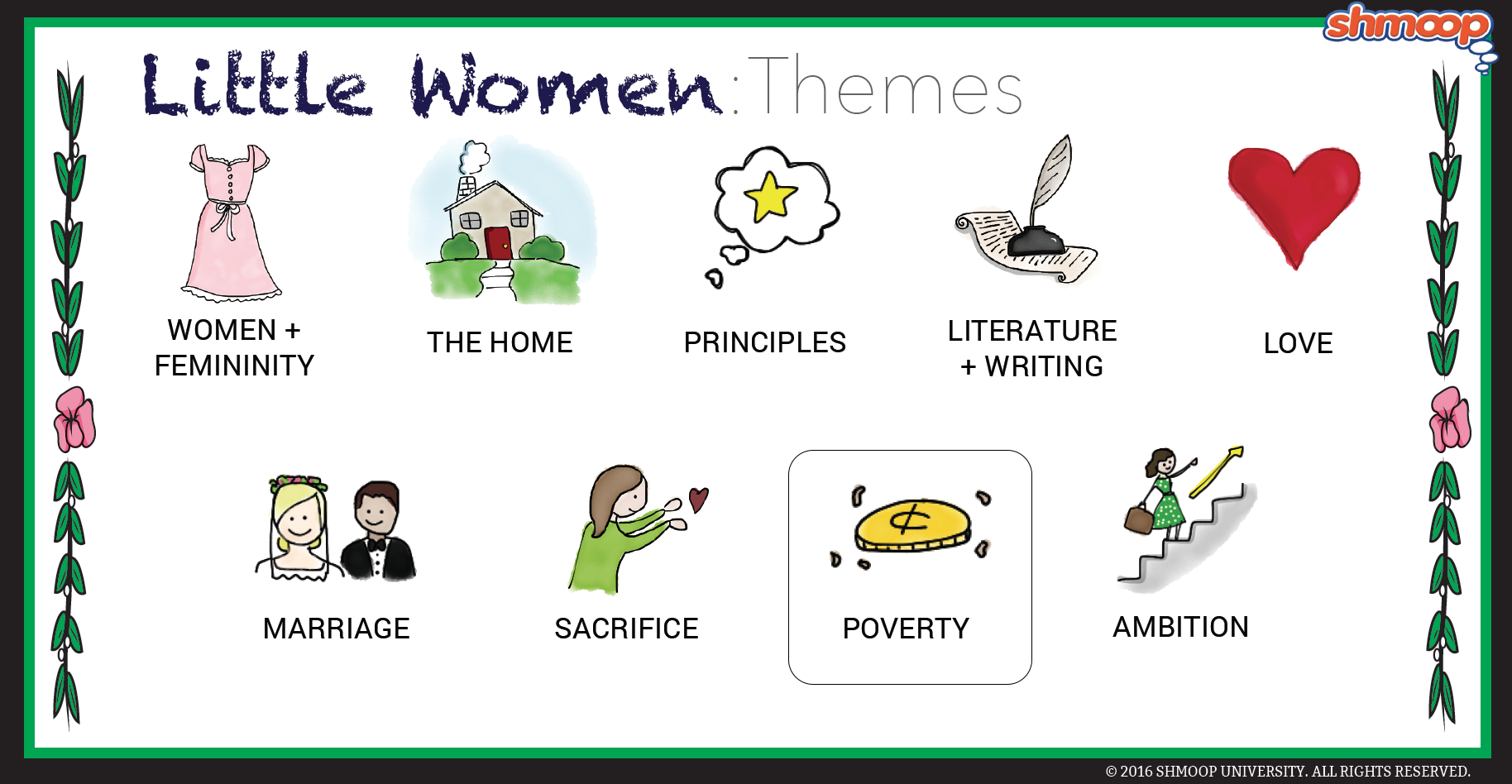 (Click the themes infographic to download.)
(Click the themes infographic to download.)
There are many different kinds of poverty in Little Women. Most obvious is financial poverty, lacking money and material goods. Financial poverty comes in many strains, and the novel reminds us that even families that seem to have very little might be better off than those who are truly indigent. More serious than financial poverty, however, is spiritual poverty. Wealthy families and individuals sometimes lack the most important things in life – love, happiness, family togetherness, and morality. In the end, spiritual and material wealth are brought together in a variety of ways to create the happiest possible situations, but financial poverty remains bearable when necessary.
Questions About Poverty
- Just how poor is the March family? What kinds of things do they have to go without that you consider important? What do they have that makes them, in a sense, wealthy?
- Compare and contrast the Marches with the Hummels. How does each family experience poverty differently? Which family is truly needy?
- Compare and contrast the Marches with the Laurences. Is there a way in which the Marches are actually richer than their wealthy neighbors?
- How do poverty, hard work, and morality seem to go together in this novel? Would it be more difficult for the Marches to hold on to their principles if they had more money? How does Meg's experience at the Moffats' house illustrate this point?
Chew on This
Genteel poverty, relieved occasionally by the charity of wealthy relatives and friends, provides an opportunity for the March girls to demonstrate their virtuous ability to work hard.
The March family is only poor when compared to their wealthy, aristocratic friends; the scenes with the starving, suffering Hummel family show how snug and comfortable the Marches really are.